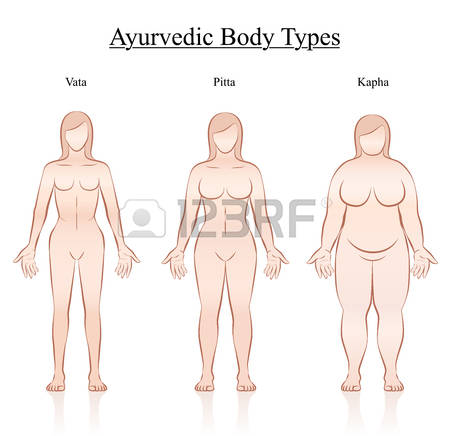









Characterology And Typology - 2
Balance is all in the 4,000 year-old Chinese Taoist system, not only between yin and yang, but between each of the five elements which are expressions of their interaction - water, fire, wood, metal and earth - and which are expressed within an individual in terms of their physiological disposition, as well as their physical body.
Macrobiotics a nutrition system developed in the 1880s by a Japanese doctor called Sagen Ishizuka, aims to balance the yin/yang qualities which exist within us all by the means of foods, which are designed either yin or yang.
People who are more yin than yang are said to be relaxed, peaceful, calm, sociable and creative; while those who are more yang than yin are said to be energetic, alert and precise. Too much yin brings lethargy, loss of concentration and depression, while too much yang causes irritability and tension.
if you went to any person practicing a therapy relating to yin/yang energies, your personality would be assessed to help diagnose where the imbalances are.
Achieving balance is also the aim of the Polynesian Kahunas, medicine men and women of the Huna faith. The whole basis of this system of medicine is the belief that man is a spiritual, intellectual /emotional being and that these e three aspects have to be in harmony if the disease is not to occur.
When Dr Edward Bach designed his flower remedies in the 1930s, his intended psychological and emotional characteristics to be part of the diagnosis, so that a remedy would be chosen depending on the feelings of a person at any given time, and depending on the life-circumstances at the time.
Whether chosen by a therapist or by oneself, as well as considering any illness, other things such as relationships or work should be taken into consideration. Sweet chestnut will be recommended for utter dejection, bleak outlook and despair, for example, while red chestnut is more appropriate for someone who is obsessed by care and concern for others.
Honeysuckle is for people wo are homesick, nostalgic or living in the past, and water violet is for those who are proud, reserved and aloof. Dr Bach believed that each person's personality and nature could be matched with a 'type remedy' which might be taken for a long period of time whereas other remedies could be used on a short-term basis to deal with passing problems.
C.J. Jung was very impressed with the old Greek and medieval idea of the four humors and adapted them into his psychoanalytic theory. The four elements were expanded into eight as follows: Air (thinking) air-fire (intuitive thinking): Fire (intuition); water-fire (intuitive feeling): Water (feeling); water-earth (sensory feeling): Earth (sensation); and air-earth dominant, and that the functions to either side were auxiliary while the function furthest way from the predominant function (if one sees these classifications as a circle) was subconscious and difficult to express.
This view has been criticised, however, because a person can be, for example, both feeling (water) and thinking (air) - as a concert pianist, for example.
Another system of personality classification exists in the enneagram - a word which combines ennea, meaning nine, and gram, meaning diagram. This system was made popular by the spiritual teacher George Ivanovich Gudjieff in the early twentieth century although the enneagram can be tracked back in time to the secret brotherhoods of the Sufis in the tenth and eleventh centuries and may go back very much further than that.
The ancient Egyptians were very seriously into the number nine believing, for example, that Atum of Heliopolis, as it says in the Pyramid Texts, 'came forth from between the thighs of the divine Nine'. Whatever according to the ennead there are nine personalities : the reformer, the helper, the status seeker, the artist, the peacemaker, the thinker, the loyalist, the generalist and the leader.
These are of course further defined so, for example, the thinker is not only perceptive and analytic, but paranoid. As with all systems of characterology and typology, each personality type has the potential to be positive or negative.
Webster's dictionary lists 17,953 different descriptions of personality traits, which shows the immense complexity that there is in the human character. Trying to classify these traits into distinct personality types has been, as we have seen, a aspect of human endeavour, and it continues to be so.
These days we tend to talk in terms of psychology, so people are defined in the literature as hysterical, obsessional, schizoid, paranoid, depressive, cyclothymic, anxious, or narcissistic. These all sound very negative but in fact it is, as usual, all about potential. So, for example, we are told that the anxious personality can be very competent and decisive.
All the systems of characterology and typology stress that no character is 'better' than another and that balance is what it's about. Fire, for example, is enlivening and warming but it can, if taken to extreme, destroy. Water can be a refreshing stream or a tidal wave that pushes asunder all in its path. It is great to be thinking 'air' personality but a tornado can rearrange things that were previously well placed .
Earth is a good foundation but an earth slide destroys all in its wake. Balance and connection with our universal self is, as ever, the ultimate human goal.
Reference: The Fragrant Mind: Valerie Ann Worwood
- Home
- Addiction
- History of Drugs-4
- History of Drugs
- History of Drugs-3
- Rosemary-Personality-Profile
- The Somatid Connection
- Personality In Perfumery
- Personality Tests
- The Water Connection
- History of Drugs-5
- Mind-Mood-Emotion-Quick Reference Chart - S - Un
- Cinnamon - Personality profile
- Emotional-Healing Problems-A-B-Positive and Negative Mood Charts
- Emotional-Healing Problems-B-H-Positive and Negative Mood Charts
- Mind-Mood-Emotion-Quick Reference Chart - Un - W
- How Essential Oils Work On the Brain
- Cardamom Personality Profile
- Essential Oils Used For Emotional Healing-A-M
- Electro Magnetism
- JASMINE- Floral - Jasminum Officinale,J. grandiflorum, J.sambac
- HYACINTH - Floral - Hyacinthus Orientalis
- Emotional Healing Introduction - 2
- Emotional Healing Introduction
- Memory Enhancement, Mental Clarity and Efficiency
- How To Get Through Life In One Piece
- HELICHRYSUM (Immortelle or Italian Everlasting)
- GRAPEFRUIT - Fruitie - Citrus paradisi
- The Art Of Smelling - Which Method - Aromaprofiles
- The Art Of Smelling
- GINGER PERSONALITY PROFILE
- Geranium - Pelargonium graveolens Personality Profile
- Frankincense Resinie - Boswellia Carteri
- Quality and Purity - 2 - AromaProfiles
- Quality and Purity - AromaProfiles
- ChemoTypes - AromaProfiles
- Adaptogens - AromaProfiles
- Synergy and Creative Blending
- Complexity and Flexibility- AromaProfiles
- How To Use Essential Oils For The Fragrant Mind


